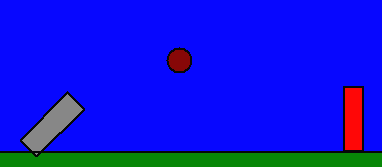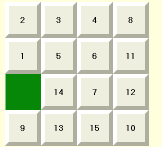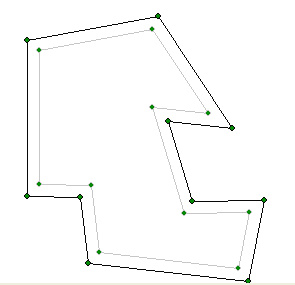What's New - January, 2007
[Home]

January 25, 2007: A grandson recently had a complaint that my cannon simulation allowed allowed the cannon ball to magically pass right through the barrel on its way to the ground if the shot was weak. I decide to fix it and had a fun week or or so exploring the implications. Think you know at what angle a projectile must be fired to achieve maximum range? What if the projectile is linearly constrained for the initial part of its flight? Cannon Balls V3 provides at least a partial answer.
January 18, 2007: The DFF Library zip file, DFFLibV09, was reposted tonight with a small bug fixed in UBigIntsV2, the big integers unit to correct a bug which could change the sign of the divisor after divide operations when the divisor was large. Also corrected a bug in the Exp(x) (exponential function, ex) in the UBigFloatV2 (large floating point numbers) unit which caused zero divide exceptions for values of x between 0 and 0.3.
 |
|
20 moves to solve |
Oh, and I also posted Version 3.2 of the 15 Puzzle program. (V 3.1 was posted on January 7). Claude Dellacherie has been giving the program a good workout and uncovered about a dozen bugs that I have fixed. I haven't heard from him in a day or two so maybe he's running out of bugs to find (or given up :>).

January 14, 2007: A new version of our UGeometry unit with a 3 new routines and a couple of bug fixes was posted today. Version 3 of the Geometry test program allows you to draw arbitrary polygons and inflate (or deflate them). The area of the polygons created is available as a side effect of the calculation. The most difficult part of the calculation is one that would be simplest for a human, determining which way to move the edges as we resize the polygon. The computer program needs to know whether to move each edge left or right, but this depends in which direction the line was drawn. (To make a polygon larger, we need to move each edge to the left if it was drawn clockwise, but right if it was drawn counterclockwise. ) The easiest way I found to determine this was to use a side effect of a common algorithm which calculates the area of a polygon. Area is negative for clockwise polygons, positive otherwise.

January 10, 2007: Peg Solitaire has apparently made it to cell phones these days. Viewer Bart wrote asking for help in solving this game on his phone. It turns out that this is hardest solvable one I've seen so far. I didn't find any shortcuts but Peg Solitaire Version 3 finds a solution for one peg left in the center hole in about and hour after trying 4.3 billion moves! I added Bart's Board as one of the program's game choices if you want to try your hand at it.
January 7, 2007: We are back from our holiday travels.
I'm trying to catch up on the emails and to lose the 5 pounds gained in the
last half of December. One of the interesting emails
received was from Claude Dellacherie., a French mathematician preparing a
talk on the 15 Puzzle.
Version 3.1 was posted today with a few of his good suggestions for
program enhancements.
